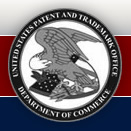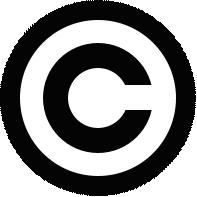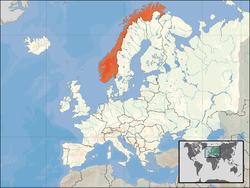After nearly two years of work, and input from well over 100 individuals at law firms, corporations, and service facilities worldwide, the final Uniform Task-Based Management System Intellectual Property billing code sets have been presented to the
LEDES (Legal Electronic Data Exchange Standard) Oversignt Committee ("LOC") for formal ratification and future maintenance.
Download the finalized UTBMS Patent Billing Codes here. Download the finalized UTBMS Trademark Billing Codes here. 
More About the UTBMS IP Billing Codes:
Until the last decade, law firm billing was relatively straightforward. Firms billed their clients in greater or lesser detail, typically providing in-depth narrative descriptions of the tasks and processes underlying their hourly charges. When issuing bills and providing the underlying detail, each firm followed its own approach.
In recent years, however, clients have become more focused on requesting additional billing information from their outside law firms, or asking that billing data be presented in specific formats. In some instances companies have wanted to analyze their costs along various dimensions to provide benchmarks for the more systematic evaluation of legal costs. In others, there has been a desire to develop a database of costs on discrete legal activities. Along with these trends,
the rise of electronic legal billing and data exchange has created a flood of new information.
In order to address these and other challenges, many consumers of legal services have began to move toward "task-based billing" systems where standardized codes are used to identify common tasks and activities performed by different service providers. These types of management information systems are well-known in
project accounting circles where costs and revenues are allocated according
work breakdown structures of
deliverables and
tasks that need to be performed in order to complete a
project. Perhaps the most well-known of these task-based billing systems outside the legal serves profession is the
Health Care Procedure Coding System established by the
U.S. Health Care Financing Administration (HCFA) in 1978 for the billing of health care services under
Medicare and
Medicaid. By similarly requiring legal bills to be categorized according to a standard set of tasks and activities, rather than by matter and day of month, it was hoped that service providers and consumers could get a better handle on where those dollars were going.
The Uniform Task-Based Management System
This new approach led to a confusing proliferation of different task and activity descriptions, until, in 1995, a consortium of legal service providers and consumers created the Uniform Task-Based Management System ("
UTBMS") with standard code sets for four areas of law:
litigation,
counseling,
bankruptcy, and
projects. Each of these four UTBMS “codes sets” includes a hierarchical list of alphanumeric codes and corresponding terms and definitions that describe the universe of legal tasks in a discrete area of legal practice or specialization. The first element in each code is a letter identifying the corresponding area of law – “L” for litigation, “C” for counseling, “B” for bankruptcy, and “P” for projects – or a general cost type -
A for activity or
E for expense. For example, a typical billing entry under the litigation codes set might include 0.5 hours of John Doe's time at $200/hour for $100 on L310 ("Written Discovery") doing A103 ("Draft/Revise") responses to interrogatories with expenses of $1.25 on E101 ("Copying").
According to an article in the February 2, 2004 issue of "Legal Times," a joint study by the Association of Corporate Counsel and Serengeti Law found that a mere 4.4 percent of the 266 companies that were surveyed required the use of uniform task-based codes in 2002. And, perhaps more troubling, about one-fourth of those companies admitted that they don't use the coded data at all. So, what's stopping task-based billing for legal services?
The April 2004 issue of "Corporate Counsel," describes the UTBMS code sets are so unwieldy that the resulting mass of information often becomes overwhelming. According to a
July 2003 article in Lawnet, law firms have also found it unrealistic to expect lawyers to code each and every time entry with two codes. "Lawyers look at the codification of legal services, and they're appalled by it," said
David Briscoe, of Altman Weil. "They say, 'There's no way I'm going to take the time to learn this, and, besides, what I do does not fit into the list of codes.'" Electronic legal billing software providers have also been overwhelmed with the sheer number and variety of billing code sets.
IP Task-Based Billing Comes to Canada
A similar Canadian UTBMS project was instigated at the suggestion of the Insurance Corporation of British Columbia (ICBC). Their legal department saw the value of the UTBMS system being developed in the United States. However, U.S. billing codes were not directly applicable to the Canadian legal system due to minor differences in process and terminology. Recognizing the value of a uniform code set for the Canadian legal community, ICBC requested the assistance of
The Conference Board of Canada in bringing together a broad coalition of law firms and corporate legal departments from across Canada to address this issue. Although an intellectual property code set was developed by the Canadian consortium, that code set used a variety of terminology that is unique to the Canadian legal system, and therefore difficult to implement for large, multinational intellectual property service consumers and suppliers.
The UTBMS Update Initiative in the U.S.
The
UTBMS Update Initiative (at
http://www.utbms.com/) was started in the Spring of 2005 in order to address these and other issues by updating and enhancing the existing UTBMS code sets. This grass-roots initiative adopted a three-prong approach focusing on: 1)
code updates, 2)
internationalization and 3)
intellectual property issues. Shortly after its formation, the Initiative’s intellectual property committee collected proprietary billing code sets from various consumers of intellectual property legal services began the difficult process of distilling those materials into a generally-acceptable standard with international applicability. Due to the transactional nature of most copyright-oriented projects, the UTBMS IP committee members quickly decided to focus on just patent and trademark billing codes for the time-being.
The development of the patent and trademark code sets was spearheaded by
Bill Heinze of GE Energy on the patent side, Ed Courtney of
Ecolab on the trademark side, and Domenic Leo of
Datacert e-billing services on the data management front. Our goal was to replace the proprietary and inconsistent cost coding schemes that are being proliferated by large consumers of intellectual property services with a single, standardized regime that could simplify data entry for legal service providers and allow for improved data analysis by legal service consumers and their providers. In April 2006, we completed a first draft of the patent billing code and draft trademark billing code sets. Those Intellectual Property Task-Based Billing Codes Sets then went through an extensive public comment and revision process. Now, after nearly two years of work, and input from well over 100 individuals at law firms, corporations, and service facilities worldwide, the attached, final code sets have been presented to the
LEDESTM (Legal Electronic Data Exchange Standard) Oversignt Committee (“LOC”) for ratification and future maintenance.
The UTBMS Intellectual Property Code Sets
In a nutshell, the IP billing code sets are structured similar to the American Bar Association's
litigation,
counseling, project, and bankruptcy code sets code sets, with each numeric task code (beginning with "TR" for trademark task codes and "PA" for patent task codes), brief identifier, and detailed description grouped into one of seven phase headings corresponding to distinct stages in the application and pre-litigation enforcement process. Both IP code sets also use the same (optional)
Activity and (required)
Expense codes, along with some additional expense codes that are unique to intellectual property. For example, the seven phase headings for the Patent Code set are
PA100 - Assessment, Development, and Administration
PA200 - Patent Investigation and Analysis
PA300 - Domestic Patent Preparation
PA400 - Domestic Patent Preparation
PA500 - International Patent Preparation
PA600 - International Patent Prosecution
PA700 - Other Patent-Related Tasks
where each consumer is expected to identify for its providers a "domestic" jurisdiction such that all matters falling outside of that jurisdiction will be coded as "international" phases. This arrangement allows cost center payors in different countries of a multinational consumer to separately identify how to differentiate among its domestic and foreign legal matters. For example, a German corporation with legal departments in the U.S. and Germany might choose to designate Germany as the domestic jurisdiction for all legal service providers. Alternatively, the same corporation might choose to identify the U.S. as the domestic jurisdiction for legal service providers in that are managed by the legal department of its U.S. subsidiary, while Germany is identified as the domestic jurisdiction for all other legal service providers.
A typical task code under the "PA 400 - Domestic Patent Prosecution" phase heading is
PA430 - Official Communication - Domestic
All action associated with processing an Official Communication from a Patent Office (known as an "Office Action" in the U.S. when directed toward the merits of the application) in the home country of an application for an application filed under PA300, including initial review and any calendaring ("docketing" in the U.S.) of any response deadline, report to client with any proposed response, review of applicant's
instructions and inventor's comments, preparation of amendments and/or responsive arguments, examiner interviews, and report of actions to the client. Includes activities associated with Official Communications not affecting the merits of the application, such as filing receipts, restriction/election requirements, and annuity/maintenance fee payments. Also includes "Petitions" and other requests for supervisory action that are not decided by a quasijudicial appellate tribunal within the Patent Office, such as petitions to reinstate an abandoned application in the U.S.
The following extraordinary tasks are separately listed under the PA700 - Other Patent-Related Tasks phase heading:
PA710 - Opinion Preparation
All action associated with the completing formal legal opinions on the validity, enforceability, infringement, and/or non-infringement of a patent claim. Includes opinions on infringement of a client's patent by a non-client infringer.
PA720 - Portfolio Analysis and Management
All action associated with reviewing, analyzing, documenting, and managing a portfolio of patents. Includes patent "due diligence" during transactional analysis.
PA730 - Assignments and Security Interests
All actions associated with negotiating and preparing assignment (i.e. previously
registered or filed application) or security interest, including review of file history, checking status and meeting with client. Work of outside vendors in conducting searches or otherwise assisting investigation should be an expense under E100.
PA740 - Licensing
All actions associated with negotiating and preparing license.
The several new expense codes that have been added to capture out-of-pocket expenses that are unique to the intellectual property fields are
E125 Translation - Translation fees including preparation and keyboarding
(typing) of documentation
E126 Drawings - Drawings prepared by external draftsman
E127 Patent and Trademark Records - Including patent copies, priority documents, file histories and other intellectual property records obtained through third-party vendors;
E128 Searching and Monitoring
E129 Official Fees, excluding post-issuance patent maintenance, trademark renewal
fees and late fees - Official fees not otherwise identified above which
are paid to governmental and quasigovernmental entities in connection with a
pending application, including those paid to Patent and Trademark Offices, the
World Intellectual Property, Notaries, consulates, and embassies.
E130 Post-Issuance Patent Maintenance and Trademark Renewal Fees - Official fees paid to a government agency in order to maintain an issued patent or trademark in force
E131 Late Fees - Official surcharge fees paid to a government agency in order to have a documents entered into the record pas an initial deadline, including Petition for Extension of Time and Information Disclosure Statement fees in the U.S.
It will be apparent from these examples that “reporting” letters to clients (such as for receipt of an Office Action or other official communication from a patent Office) have not been broken out separately from the tasks that are likely to be authorized by the client as a result receiving the reporting letter. Although service providers put varying degrees of effort into such initial tasks, the need for simplicity in the code sets was believed to overweigh the value of such minute breakdowns of billing information for clients. In fact, the task codes are numbered in groups of ten so as to allow clients to add additional codes for any such further breakdowns, and also allow additional codes to be added by the LEDES in the future to reflect significant changes in intellectual property procedures. In addition, each phase is also provided with an “X99” task code (where ”X” is the phase series) that service providers can use for tasks not captured in the in the existing codes for the particular phase, and/or that clients can designate for any special task information that they would like to collect.
There are significant benefits to both law firms and law departments in terms of administrative simplicity and cost reduction from standardization under these code sets. In addition, these code sets should help consumers of intellectual property legal services to analyze their costs along various dimensions and provide benchmarks for the more systematic evaluation of legal costs. For organizations that find their costs outside industry benchmarks, this information may also lead to more frank discussions about excessive service level demands and/or service level differentiators. Such objective information will hopefully allow both consumers and suppliers of intellectual property services to have clearer expectations that lead to more even more effective and efficient commercial relationships that those that exists today.









